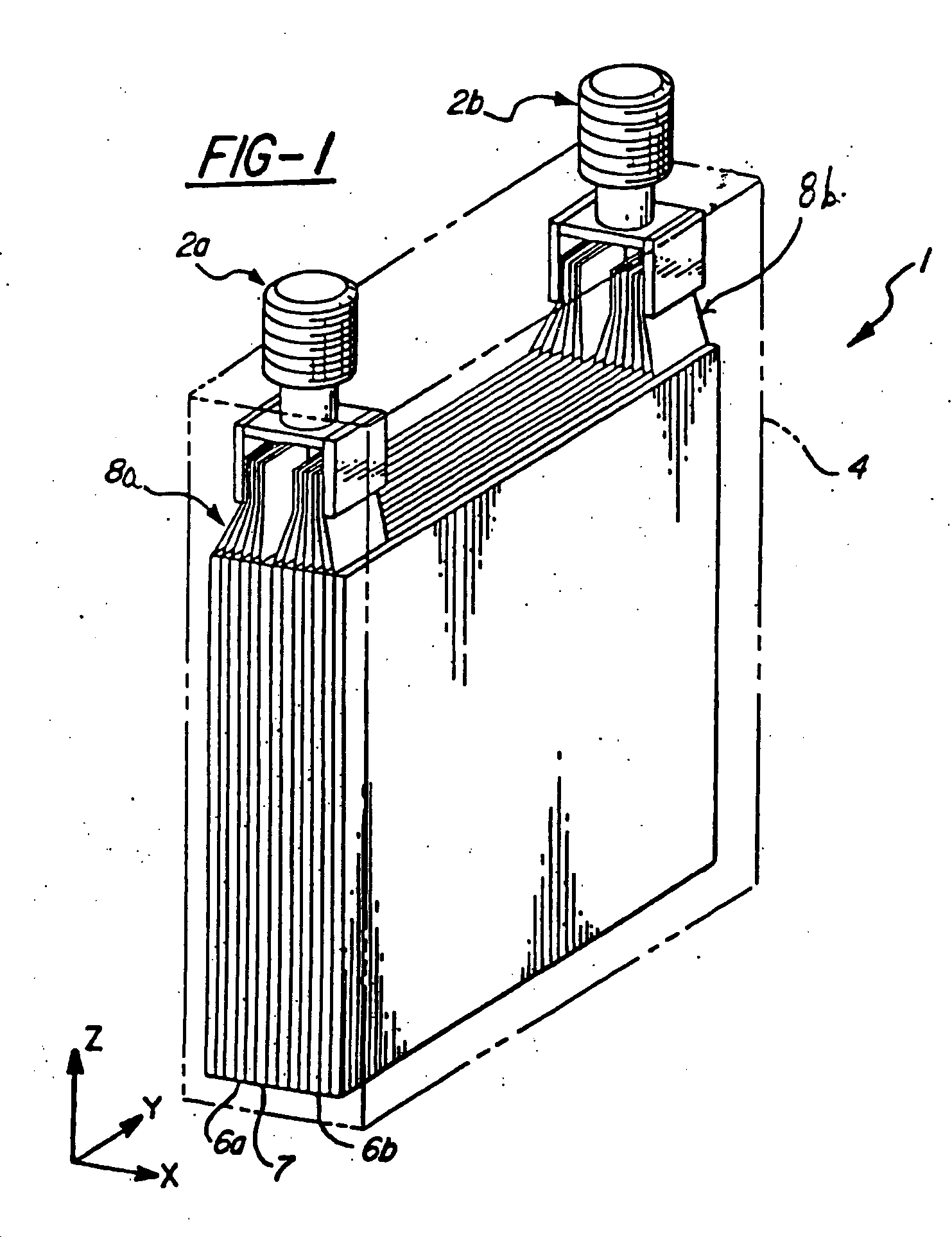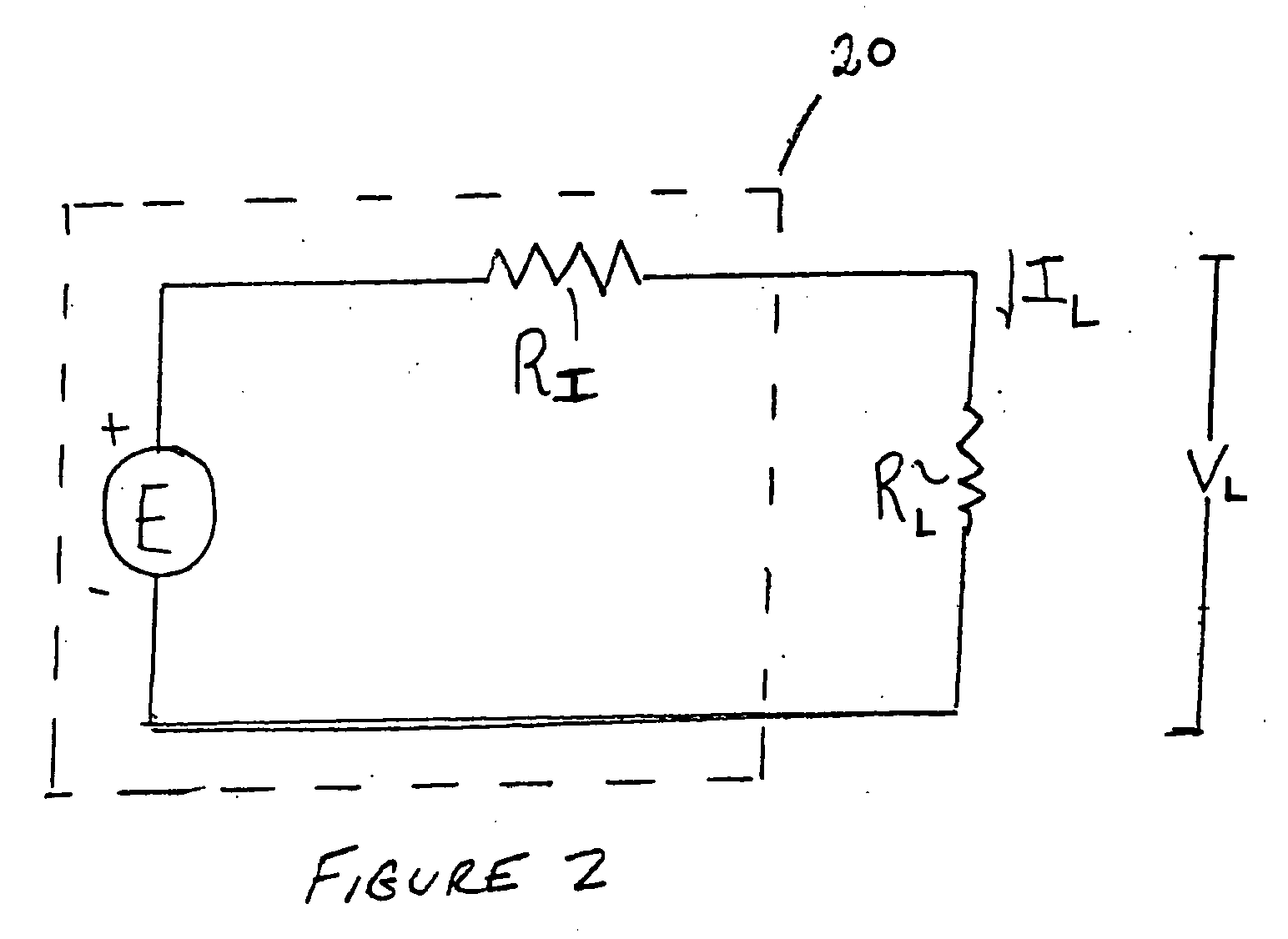Method for cold-starting batteries
a technology cold-starting, which is applied in the field can solve the problems of adversely affecting the output power of nickel-metal hydride batteries
- Summary
- Abstract
- Description
- Claims
- Application Information
AI Technical Summary
Benefits of technology
Problems solved by technology
Method used
Image
Examples
example 1
A nickel-metal hydride battery cell comprising metal hydride negative electrodes, nickel hydroxide positive electrodes and a potassium hydroxide electrolyte is first cooled so that the temperature of the electrochemical cell (measured as the skin temperature of the cell) is at −30° C. The battery cell, at 80% state of charge, is then discharged at a rate which is preferably between about 40C. to about 60C. The battery is preferably discharged for a time period of about 10 seconds. The discharge pulse simulates a short circuit.
In the example shown in FIG. 4A, the battery is discharged at about 180 amps for a time-period of about 10 seconds.
FIG. 4B is a plot of the skin temperature of the battery cell as a function of time. FIG. 4B shows that, as a result of the discharge pulse, the outside skin temperature of the battery cell increases from about −30° C. to about −15° C. in about 60 seconds.
Table 1 shows the effect of the discharge pulse on the output power of the cell. The out...
PUM
 Login to View More
Login to View More Abstract
Description
Claims
Application Information
 Login to View More
Login to View More - R&D
- Intellectual Property
- Life Sciences
- Materials
- Tech Scout
- Unparalleled Data Quality
- Higher Quality Content
- 60% Fewer Hallucinations
Browse by: Latest US Patents, China's latest patents, Technical Efficacy Thesaurus, Application Domain, Technology Topic, Popular Technical Reports.
© 2025 PatSnap. All rights reserved.Legal|Privacy policy|Modern Slavery Act Transparency Statement|Sitemap|About US| Contact US: help@patsnap.com



